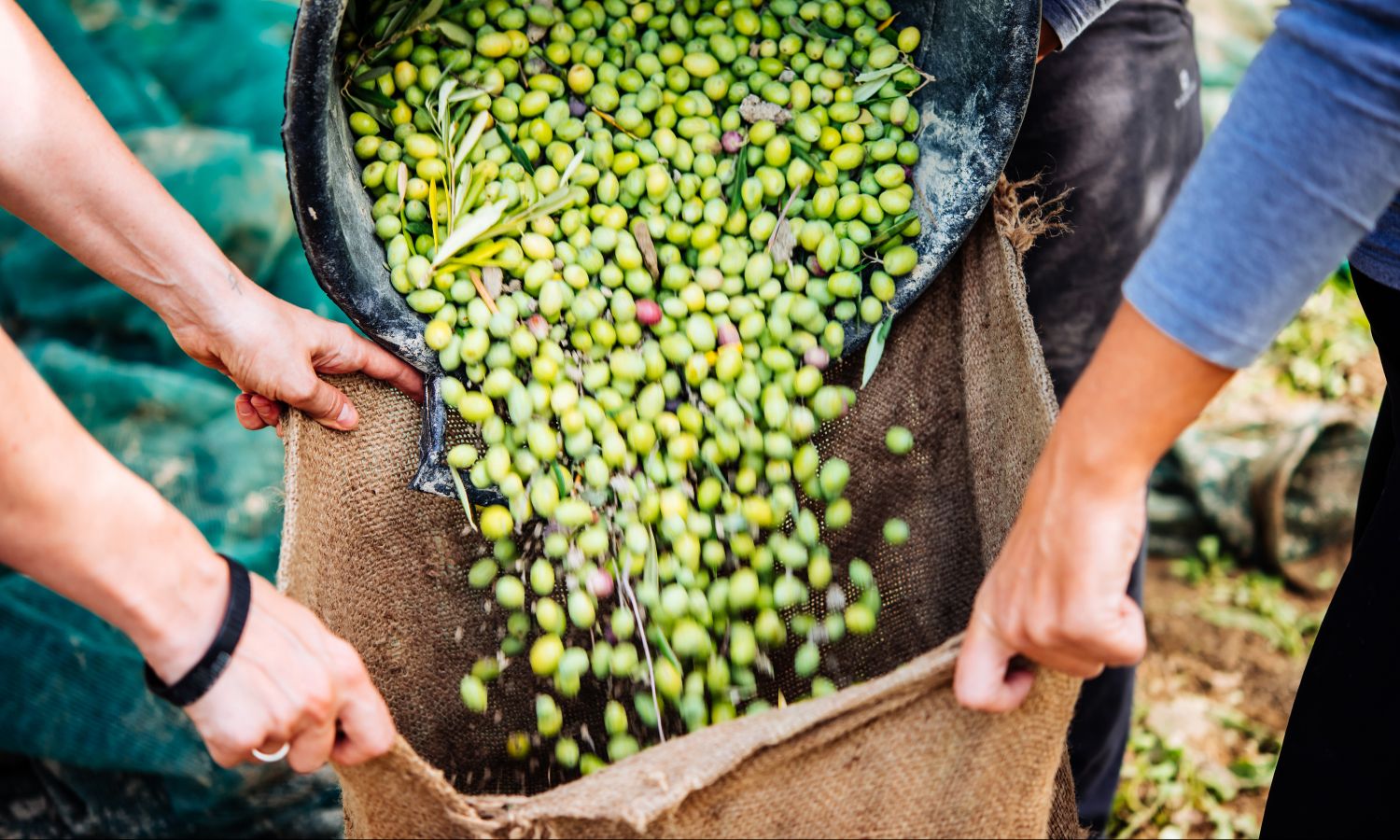
Early Picking and Fast Pressing Means High-Quality Olive Oil
Every season, farmers work hard to track and monitor their olive orchards so they can identify the ideal time for harvest. That means paying strict attention to the life cycle of an olive, which is essentially divided into three phases: green, veraison and full ripeness. The moment of the crop is crucial as it will define the olive oil flavors and aromas profile.
When an olive is green, it’s in the beginning of the crop and at the first stage of ripening. The fruits are firm to the touch and contain a high level of antioxidants (polyphenols), which result in a bitter taste.
In the veraison phase, the fruits start to shift to purple; however, not all of the olives will change color at the same time. In the same tree, you’ll often find fruits that are green, purple and red. The olives become softer as they change and still contain a high level of polyphenols. The aroma is green and fresh, and the taste is bitter and pungent.
At the end of the veraison phase, the fruit becomes fully ripe and the color varies from intense purple to black. More mature at this stage, the olives will producer sweeter olive oil with less bitterness.
So, when making olive oil, when is the best time to pick the olives?
For Bertolli, earlier is better. The olive oil company has many practices in place to ensure that the olives they get from their suppliers are the best quality for their products, and one of these standards includes picking olives early in the season. The company even pays farmers more money to guarantee that the Bertolli crop is harvested early. There are two main reasons why Bertolli only uses green and early veraison olives.
- Respecting Nature
In order to successfully harvest olives from the same land year after year, it’s important to respect the natural cycle of the olive tree. Picking early means that the tree will have enough time to reset and thus will be able to provide good, healthy fruit the following year. The careful consideration that goes into the way the trees are treated allows farmers to rely on them in the future. In fact, many of the orchards Bertolli works with have trees that are over 100 years old!
- Preserving Benefits
When an olive is picked while green and fresh, the oil is fruitier, more complex and contains more polyphenols. Polyphenols are important when describing the health benefits of olive oil. They are micronutrients with antioxidant properties that play an important role in preventing and reducing the progression of common illnesses such as diabetes, cancer and cardiovascular diseases. So, an early harvest guarantees an oil that contains the maximum level of polyphenols for good health. If, on the other hand, you pick a mature olive that’s completely ripe, it will contain lower levels of polyphenols—and thus yield a less nutritious olive oil.
While an early harvest guarantees a more nourishing oil, it also means that less oil can be extracted from each piece of firm, green fruit or early veraison. More immature olives are required to obtain a certain amount of oil compared to using fewer mature (and juicier) olives. With cost savings in mind, many olive oil suppliers choose to only pick fully ripe or overripe, mature fruit to minimize the number of olives needed for their oil production.
“We incentivize the farmers not to let the olives become overripe even though that means the yield will be higher,” explains Anna Cane, Bertolli’s Corporate Quality Coordinator. “Because at that point, the quality will be very low.”
Bertolli is more focused on delivering the best olive oil to shelves, refusing to sacrifice quality for a higher output.
Immediately after picking the olive off the tree, the countdown begins. To ensure that the fruit is pressed when it’s at its freshest, the olives are taken directly to the mill. The olives used to create Bertolli olive oils are always pressed in 10 hours or less, preserving the fruit’s freshness, taste and health properties. Once the olives have been pressed into an oil, Bertolli takes great care to protect it from heat, light and oxygen, as exposure to these elements can shorten the shelf life of the oil.

